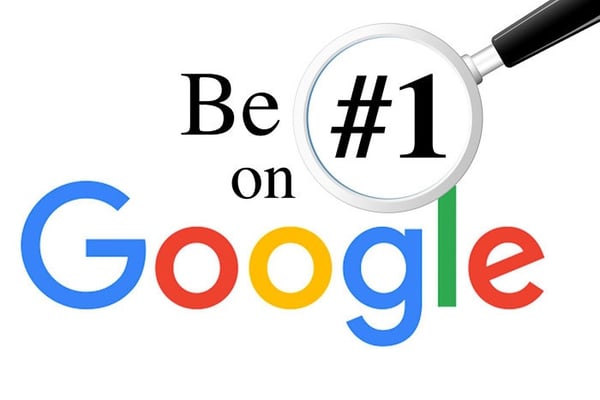
Today, buyers have learned to block out interruptive marketing messages and instead choose where to spend their money based on their own research. .
Why is content marketing so important? Buyers are more independent and empowered than ever. The digital world has shifted how we buy. Today, buyers have learned to block out interruptive marketing messages and instead choose where to spend their money based on their own research.
The average adult spends more than 20 hours per week with digital media. Whereas before, the customer appeal of a brand would be determined by cost, products and services. Today, customers choose where to spend their money based on the value they receive from a business prior to purchasing.
Content marketing has therefore become a key strategy in helping organisations to prepare and plan for reliable and cost-effective sources of website traffic and new leads that help to build strong customer relationships.
To ensure an exchange of value occurs before your customer purchases, it’s essential to make their research as pleasant and painless as possible. When you solve someone's problem, they naturally feel you care about them, and today, more than ever, they want to feel cared about, because the world is louder and noisier than ever before and attention is our most valuable resource.
This value can be provided in the form of: a Blog post, Ebook, Infographic, Checklist, Newsletter, Video, Social media post, Website page, Landing page, Emails, and more.
By understanding your buyers, you can identify pain points and create content around those challenges. Doing this consistently well over time will result in your customers turning to your organisation as the antidote to their problems. It will also win you the trust and loyalty that is critical for acquiring and retaining customers.
The customer has changed. That means you have to adapt.

Your main objective is to provide real value to your target audience so they come to you for expert advice and information.
If content is king in the marketing industry, context is king in the sales industry. Sales are no longer the gatekeeper of information. Your goal is to make your buyers research easier and more enjoyable than ever before by providing expert insight.
Content marketing can help sales target prospects in smarter ways that will lead to a relevant conversation between buyer and seller. Using a common CRM platform between sales and marketing will enable you to layer the context to your outreach and lead to a relevant conversation between buyer and seller.

Developing meaningful content will help your sales team to organise, track and nurture your customer relationships, based upon the types of content they are interacting with.
If your prospect downloads an ebook about inbound marketing, it’s clear they are interested in finding more about inbound marketing. If they have opened your email 5 times and clicked on the blog 3 times, every piece of content that is interacted with is providing both sales and marketing with real-time contextual intelligence.
Sales reps can glean these insights to help navigate their outreach efforts by understanding what is on a customers mind, and their propensity to buy. Utilising this intelligence will lead to more meaningful and relevant conversations with prospects and customers.
 Being aware of your prospects issues will empower your sales team with the right solutions. This approach generates more sales and achieves better-qualified leads, based on interest levels and predictive scoring.
Being aware of your prospects issues will empower your sales team with the right solutions. This approach generates more sales and achieves better-qualified leads, based on interest levels and predictive scoring.
Knowing your audience is key to content marketing success.

Before you can truly offer valuable content, you first have to get into the shoes of your customers. In other words, you have to develop detailed buyer personas. Buyer personas are fictional, generalised representations of your ideal customers.
Buyer personas help you to understand your customers (and prospective customers) better. This makes it easier for you to tailor your content, messaging, product development, and services to the specific needs, behaviours, and concerns of different groups.
The strongest buyer personas are based on market research, as well as insights you gather from your actual customer base (through surveys, interviews, etc.). When creating your buyer personas it’s important to put yourself in the shoes of your target audience.
Where do they go for information and advice?
What challenges do they have in their job role?
What are their primary business goals?
Once you’ve worked out who your potential customers are, what they want, and how they are searching for it, you can start attracting targeted leads with content that is relevant and valuable.

A lead is a person who has indicated interest in your company's product or service in some way, shape, or form. Whether that be completing a survey, interacting with you on social media or downloading an ebook (Content). All of these are signs that someone out there likes what you’re doing.
Lead generation is the process of attracting and converting strangers and prospects into leads. It's a way of warming up potential customers to your business and getting them on the path to eventually buying.
Within the larger inbound marketing methodology, lead generation falls in the second stage of the buyers journey (convert). It occurs after you've attracted an audience and are ready to actually convert those visitors into leads for your sales team. Generating leads is a fundamental point in an individual's journey to becoming a delighted customer of your business.
At the early stage of the buyer’s journey, meeting your contact with a sales pitch is going to turn them away. To develop different ways to get your leads’ attention, you must target prospects with insights designed to disrupt their thinking and help them realise they have a unique problem you can solve.
By providing your buyer with educational, non-promotional content in the form of webinars, white papers, videos, blogs and peer recommendations on social networks and forums, you can attract prospects by offering value.
Align your sales and marketing teams to quickly establish who each prospect is, how the lead was generated, where they are active online and how they’ve engaged with you in the past. This will help you recognise the specific needs of your prospects and customers at each stage of the buyer's journey. With this insight, you can begin creating relevant content to push your contacts further along in the marketing funnel.
With the control firmly in the hands of the buyer, marketing is being held more accountable for supporting sales in the customer nurturing process.
“By showing an organic interest in your business, it's those strangers and prospects that are initiating the relationship with you, rather than you, the business, initiating the relationship with them.” (HubSpot) This makes it easier and more natural for them to want to buy from you somewhere down the line.
Not only can helpful content be used to acquire customers, it can also be used to build and maintain ongoing relationships with potential buyers as you continue to delight them with helpful content.
Once your leads are in the marketing & sales funnel, they need to turn into a sale. Only then can you count your marketing effective. You need to nurture your leads after that initial point of contact. Align your sales and marketing so that they strive for the same goals. Use email automation, exclusive content, and lead scoring to nurture your leads.
Part of a good lead generation effort is retaining the leads you already have. Once a lead has passed a stage in their journey, they should be met with a new type of touchpoint that is relative to them. This will keep them from unsubscribing and dropping from your lead list.
Since proving the ROI of marketing activities continues to be a priority for marketers, it's important to be able to calculate your lead generation efforts.
To calculate Marketing Originated Customer %, take all of the new customers from a period, and tease out what percentage of them started with a lead generated by your marketing team.
Formula: New customers started as a marketing lead / New customers in a month = Marketing Originated Customer %
Let’s look at an example:
Use this formula to identify your marketing team’s lead generation efforts.
Everything you need to start creating your content today.
53% of marketers say blog content creation is their top inbound marketing priority.

Google’s algorithm is programmed to deliver the most relevant search results to the user. By measuring the relevance of millions of webpages, it can serve up the most useful information based on a particular search query. That's why it has become a shrine to all of our questions.
Blogging is one of the best organic methods of making sure your content or message is in the right place, at the right time, for the right person, when they are searching online, to provide the right answers to their search engine queries.
The problem is getting noticed amongst the heavyweights. When you’re competing with the likes of Wikipedia, it can seem an impossible task to get your answers in front of your audience.
Growth doesn't just happen overnight! You've got to work hard.

Write for Google first, and your buyer persona second. Search engines like Google "read" blogs to learn what your website is about, so they know whether they can return any of your website pages to their users who perform searches.
To drive potential customers to your site, it’s important to get familiar with your buyer personas. You need to know what problems they have and how they are searching online to solve those problems. Base your blog posts around certain keyword and phrases that your target audience are searching for.
Lets explain what this is….. Compel your readers with sparkling copy that answers their burning questions. This will make your readers want to click through to your site.
Visual content is a great way of engaging your audience online, but ff you’re producing videos, infographics, or other visual content, it’s equally important to include a transcript or written summary on your site so that search engines can find the content.
Now that you’ve written a shareable blog post, video, ebook, landing page, you need to make sure it’s getting shared. As a rule, spend 20% of time creating content and 80% promoting it.
“More than 2 million blogs are published each day.” Publishing one blog is like throwing a stone into the ocean, it’s not going to make much of a ripple effect. By publishing post after post after post, you will build authority in your field and those visits will stack on top of each other as they rank in search.
Watch your traffic and trust go through the roof!

Typically, websites that have a blog have 434% indexed pages. Blogging gives you endless opportunities to create new page URLs that can be ranked in search and discovered by people that were previously unaware of your business. Like fishing, the more hooks you have in the water, the more chances you have of catching another fish.
Writing about the issues and problems your prospects are trying to solve brings in the type of lead you want to sell to.
Link internally to other areas of your website that will help your reader solve further issues. Search engines will also reward you by increasing your page authority.
Traffic + Trust = Leads
According to HubSpot, B2B marketers that rely on blogs get 67% more leads than those that do not use blogs.
Once you publish a blog post, it’s out there on the internet forever. This means it has as much value the day you post as it will weeks, months or even years after (so long as the content is still relevant). Compounding blog posts make up 10% of all blog posts and generate 38% of overall traffic.
By publishing the right content in the right place at the right time, your marketing becomes relevant and helpful to your customers, not interruptive.
Now that you’ve answered your prospects questions you have offered them value. This has made them aware of your brand and earned their trust. As you continue to delight them with helpful content, you will push them further along in the buyer's journey.
Content is king, and social media is the castle it lives in.
It doesn’t matter whether you’re a B2C marketer or B2B marketer, ultimately you’re a business to human marketer and humans live inside social channels. Sharing content where audiences live means that content needs to be more personalised and more stylised than ever before.
Social media presents an opportunity to grow lasting and scaleable relationships with the people who feel that you’re worthy enough to subscribe too. Those relationships create the foundation for what can eventually become one of your greatest marketing assets: customer advocacy.
Advocacy is not something that you can stumble upon or buy. Advocacy is earned over time through continuous and positive engagement with your customer base. It is earned through experiences that delight, and through the delivery of the highest class of customer service.
To cut through the noise it’s important to deliver quality content. People come to social media to binge. And unless you can stop them from scrolling, your post won’t get a look in. That’s why you need to ensure you’re publishing authentic and engaging content.
When your audience is convinced that there are real people with real emotions behind your brand, they’ll start to engage with you like a friend. Don’t shy away from engaging with those who are commenting on your posts and relish a little spontaneity if it’s appropriate.
Think pleasure not business when targeting your audience on social media. Content that helps is superior to content that sells.
Just like blogging, you should work social media into your daily schedule. Add it to your calendar and treat it like a meeting that you absolutely cannot miss. Do Something Every Day!

YouTube has dominated the way millennials seek answers. It has become a repository for information and entertainment, with over one billion hours of content viewed on YouTube everyday. These figures are on the rise and Facebook expects its platform will be entirely video based by 2023.
To provide truly valuable content you need to ensure it is delivered in a form that is desirable. Given that video is the most preferred form of content, it’s a medium worth investing in.
“Customers are more inclined to engage with or purchase from brands they feel the strongest connection with.” Video nurtures these kind of richer responses because they help us to digest much more information.
Videos are 40X more likely to get shared on social media than other types of content. Sharable content is like gold dust on social media. If something spreads like wildfire, you’ll have advocates singing from the rooftops about your brand.
60% of videos on YouTube are watched on mobile devices and the sharing rate is also higher on mobile devices. So if you have been ignoring the tools and techniques that create better engagement for mobile viewers, you're limiting both your reach and sharing opportunities.

As technology evolves, so too will the best ways to interact with your ideal clients. For many customers today, an experience is inauthentic if it’s not interactive. Many brands are turning to virtual reality as a way of solving existing industry problems and enhancing the customer experience.
Automation technologies make it possible for organisations to repeatedly deliver engaging and authentic experiences that are more personal and which help customers to form a deeper emotional connection with a brand. B2B marketers who implement marketing automation increase their sales pipeline contribution by an average of 10% according to a report by Forrester.
Facebook Live is also gaining traction as a cost-effective way of retaining audience’s attention. In fact, Facebook Live videos are watched 3 times longer than videos that aren't. They also generate more engagement, with users commenting on Facebook Live videos at 10 times the rate of regular videos.
Want to know how content marketing can apply to your business, or just want to understand where to get started, contact us today for a free consultation.
Everything you need to start creating your content today.